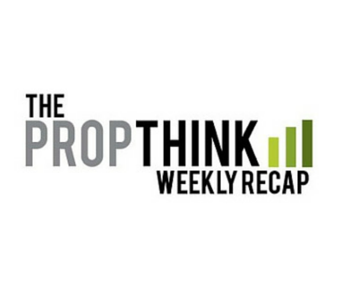Healthcare stocks were routed early this week, falling 10% (based on the NASDAQ Biotech Index) before a bounce from mid-week into Friday. The similarities to one year ago in February are striking, with the financial media yet again trotting out the “biotech bubble” segments and articles and investors skittish that there’s more downside to be had. Recall that biotech fell out of favor for most of March and April of last year, dropping 25% before the bleeding stopped and things heated up into the annual ASCO conference in late-May. The bull market has continued since, and buying the bottom in April of last year has been good for almost 70% for sector-tracking ETFs alone.
Though there are certainly stretched valuations among many small- and mid-cap biotech stocks again, we’re not doom and gloom, which we explained on Thursday at PropThink.com. Read Biotech is Swooning. You Shouldn’t Be.
Shares of the European immuno-oncology company Innate Pharmaceuticals (IPH.PA) dipped late this week with the news that one arm (which treatment group has not been disclosed) in its ongoing EffiKIR trial would be stopped, and that results comparing the remaining arm to placebo have been pushed back to the second quarter of 2016.
EffiKIR is a randomized phase II trial of lirilumab as maintenance treatment in elderly patients with Acute Myeloid Leukemia (AML) who are in first complete remission. The trial includes three arms: single agent lirilumab at 0.1mg/kg every 12 weeks (q12w, or intermittent), 1 mg/kg every 4 weeks (q4w, or continuous), or placebo. Our read-through and the general consensus among investors is that it is likely the low-dose arm that has been stopped. (We confirmed with the company that they remain blinded to the study, including which arm was halted) That shouldn’t be entirely surprising given that this arm includes a dose 90% lower than the alternative and at 1/3 the frequency. Additionally, an ongoing trial of lirilumab in combination with partner Bristol–Myers Squibb’s (BMY) nivolumab utilizes the continuous dosing schedule.
More immediate, perhaps, Investors are selling IPH because there’s now a risk that the company has no major catalysts this year, making IPH.PA a 2016 story and giving investors little reason to tie up capital until later this year. We’re working through some details based on this latest update and will publish a deeper look on the implications of this news in the near-term. Though IPH.PA is likely dead money for now, it’s certainly an intriguing story for biotech investors to track.
In other news this week, MEI Pharma (MEIP) shares dropped 60% on Monday when a combination of MEIP’s pracinostat and the chemotherapy Vidaza (azacitidine) failed to improve remission rates in patients with Myelodysplastic Syndrome (MDS).
The HDAC inhibitor combined with Vidaza showed no difference in the rate of complete remission compared to azacitidine, while duration of response, progression free survival, and overall survival results will require longer followup. The company said that these will be reported at a medical conference later this year.
MEI had planned to begin a phase 3 trial of this combination in 1st-line acute myeloid leukemia (AML) later in 2015; however, Monday’s press release suggests that the company will hold off on testing a combination until more data are available from the latest study.
By the end of the week MEIP was trading well below its cash position of about $2.35 per share. For bounce traders, MEIP is one to have on your watchlist.
On Friday, top-line results from Ohr Pharmaceuticals’ (OHRP) phase II IMPACT study, testing its squalamine eyedrops in age-related macular degeneration (wet-AMD), had a crushing effect on the stock. OHRP dropped from $8.75 at Thursday’s close to $3 with the study failure. Interestingly, investors are dumping OHRP not because the primary endpoint missed in the study – this was expected based on an interim analysis last year – but because Ohr is now touting a subset analysis quite different from at the interim, and blaming the change on a varied patient population in the 2nd half of the study. Investors know that the subset analysis rarely plays out in larger studies, and Ohr is already a contentious stock.



